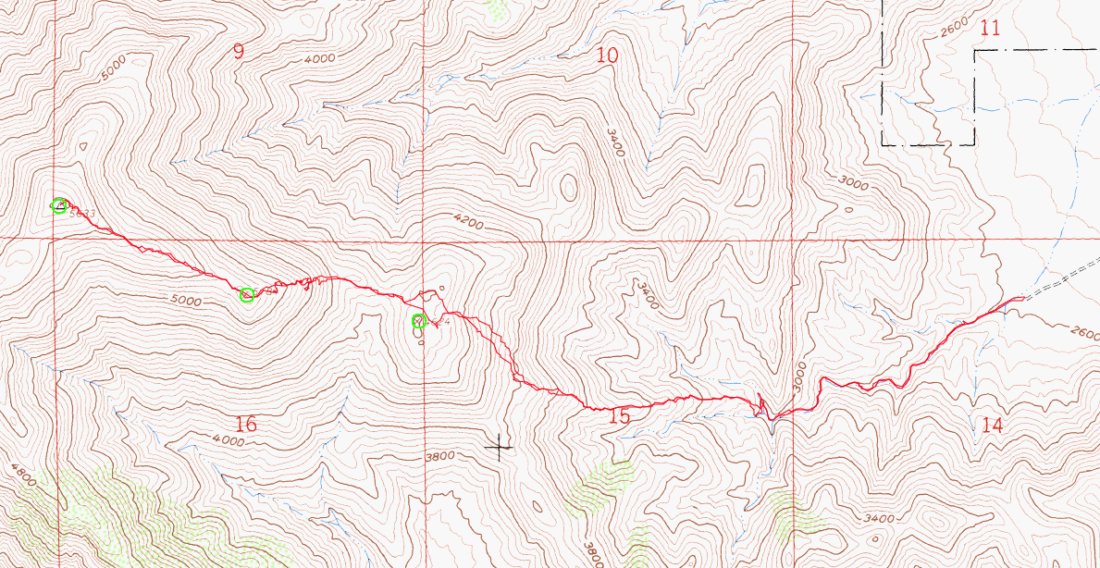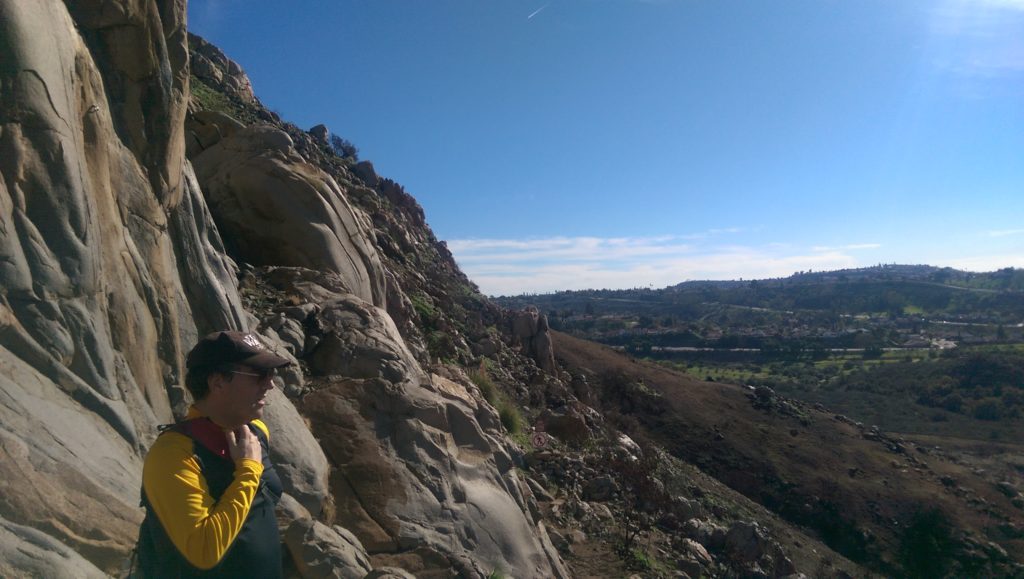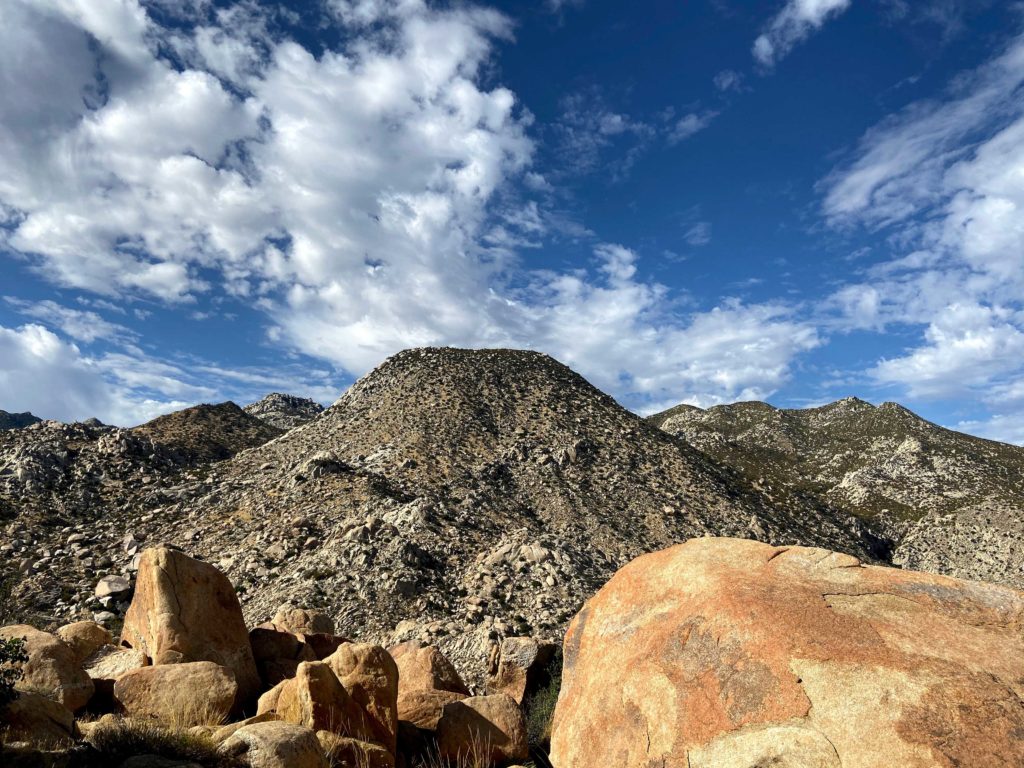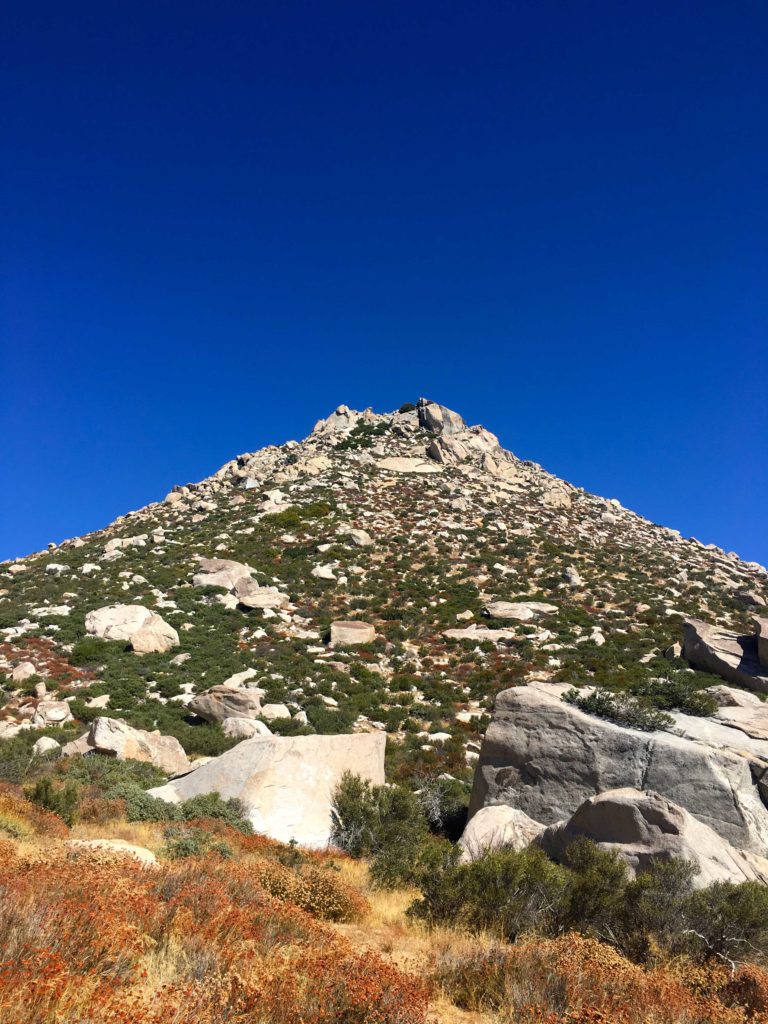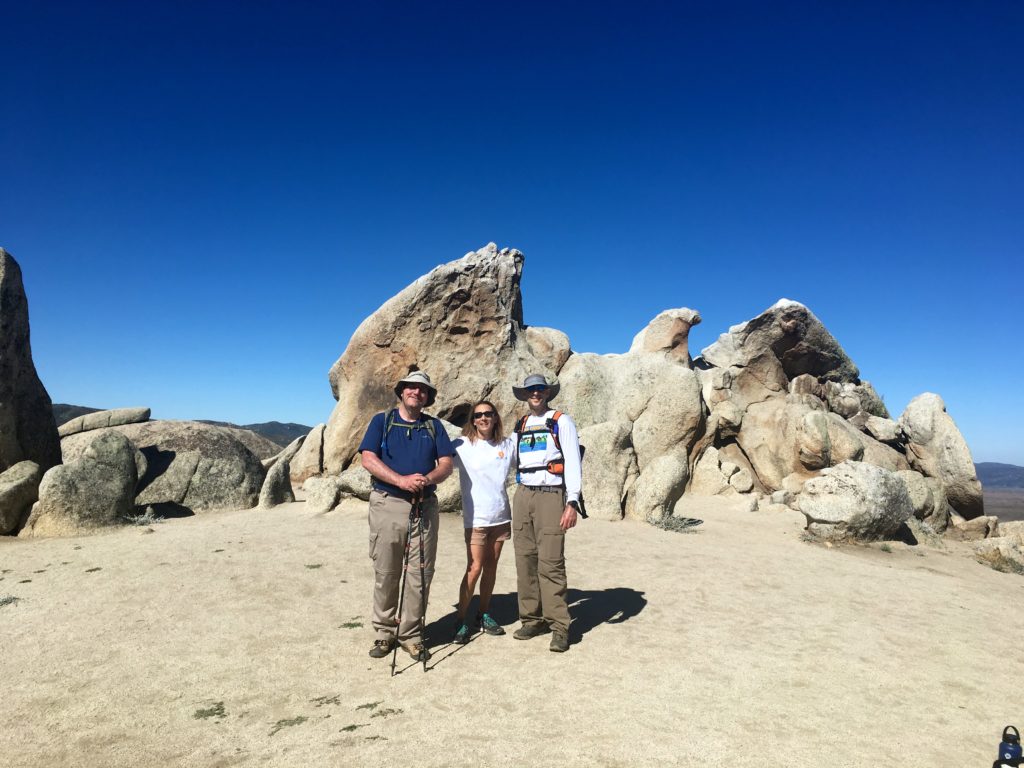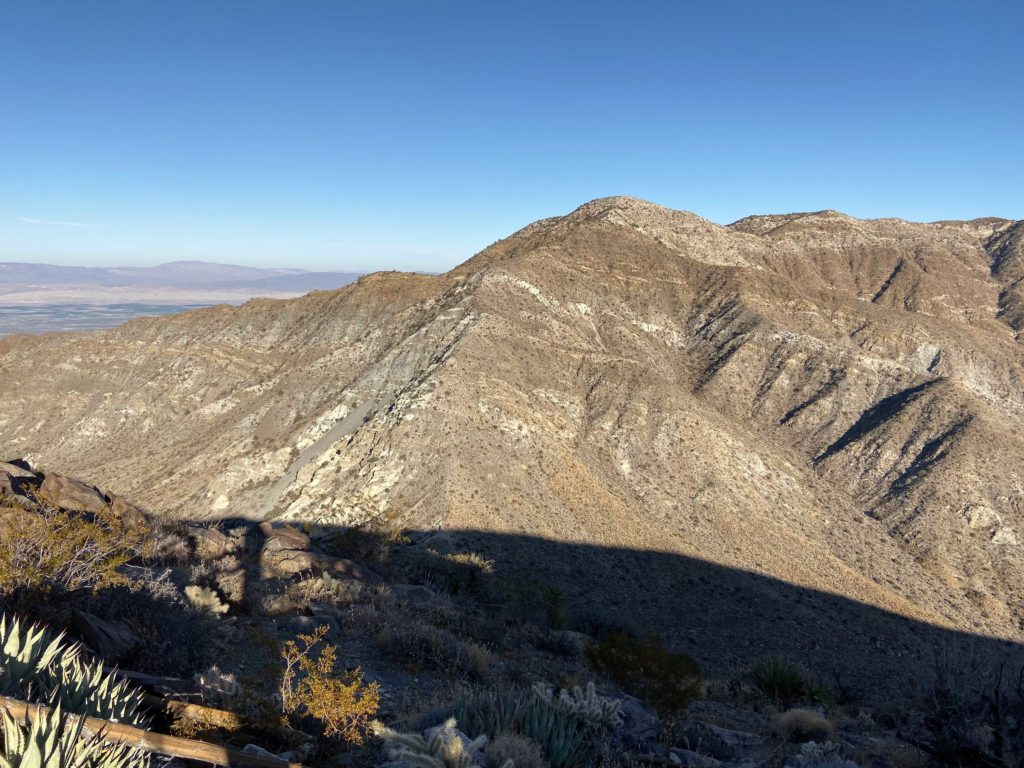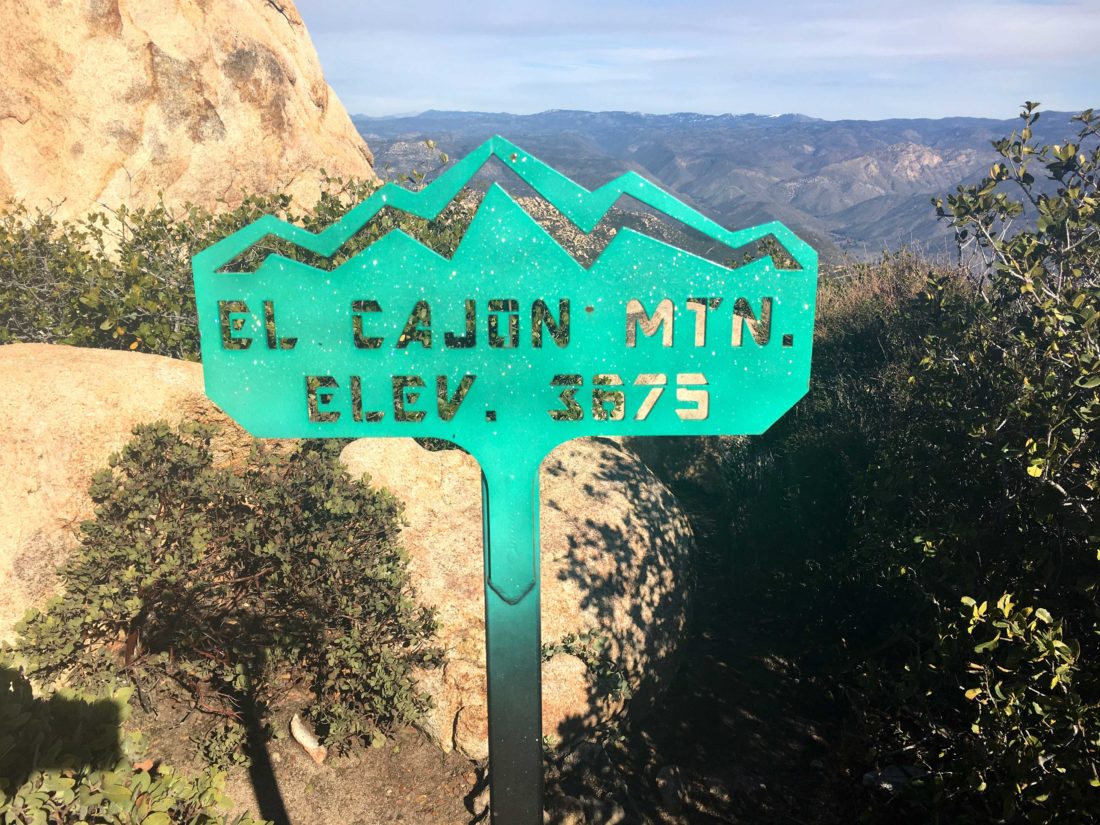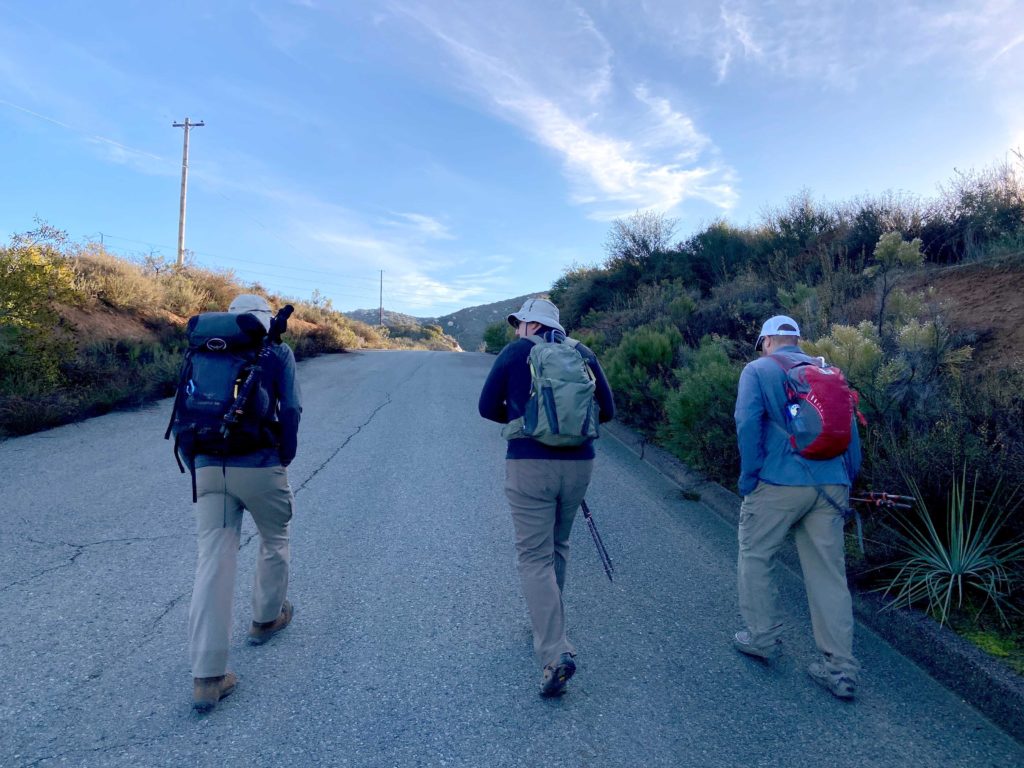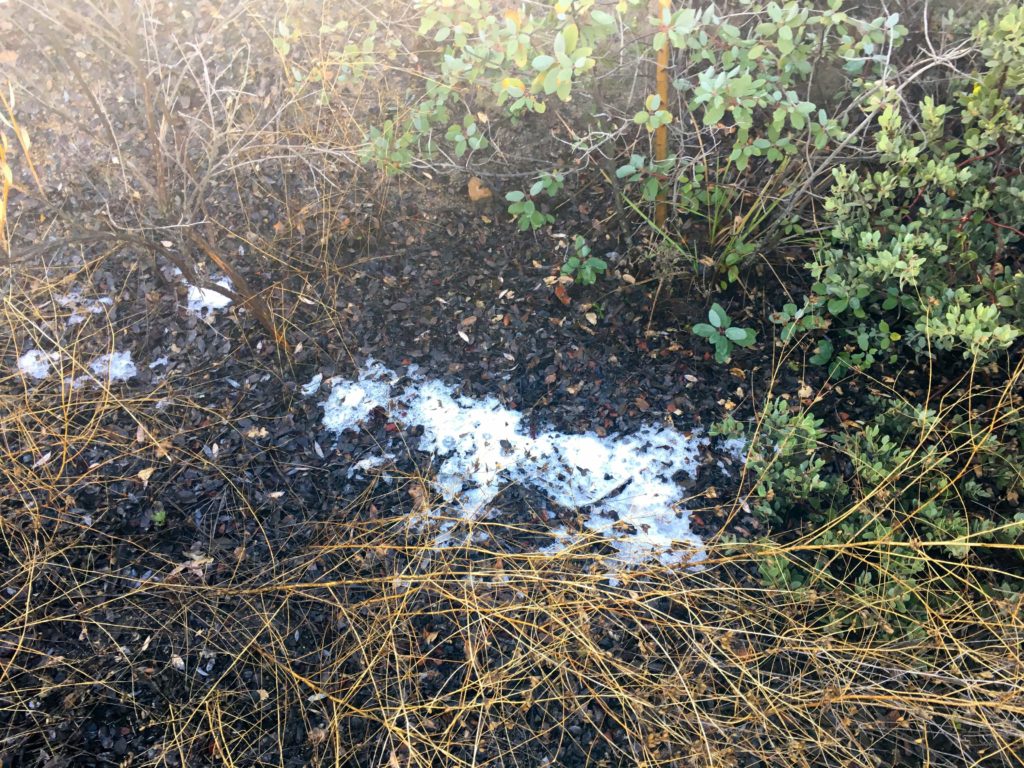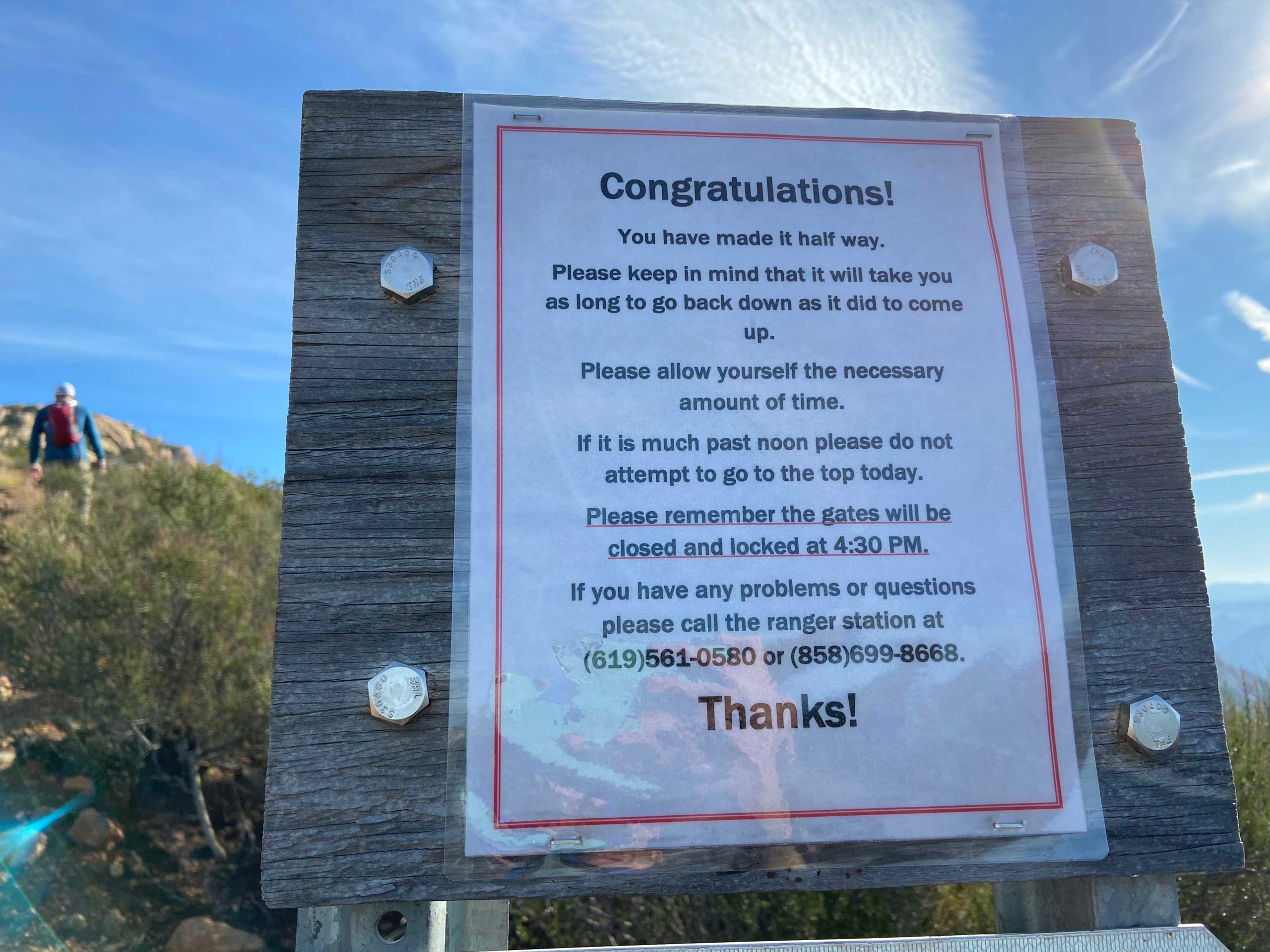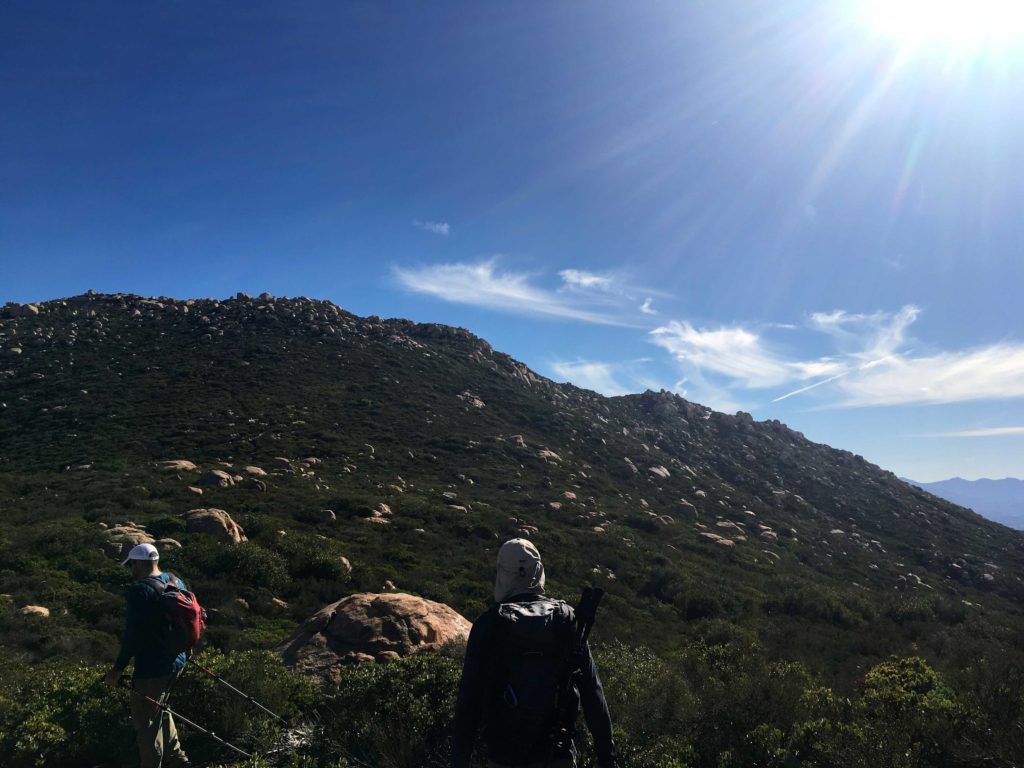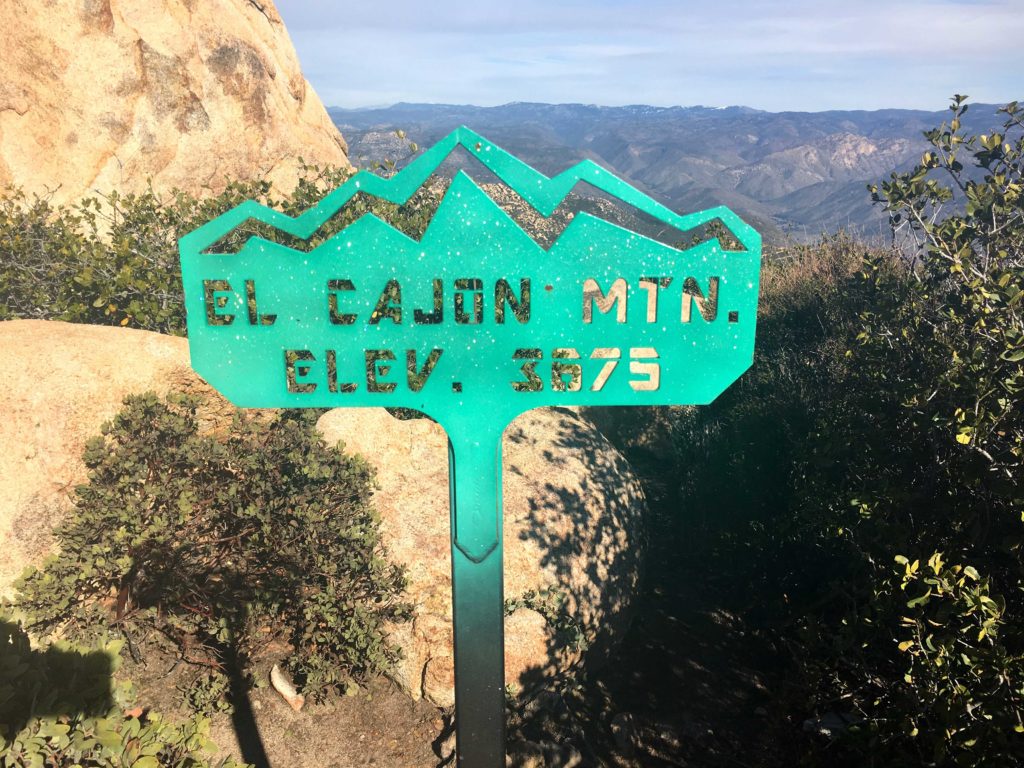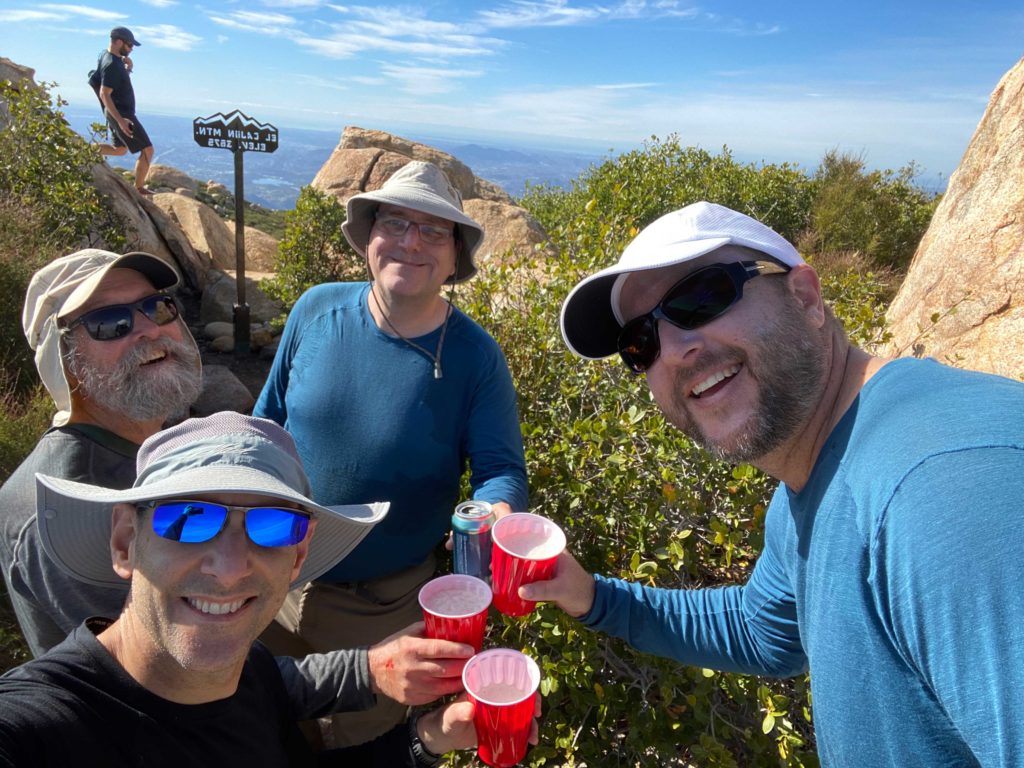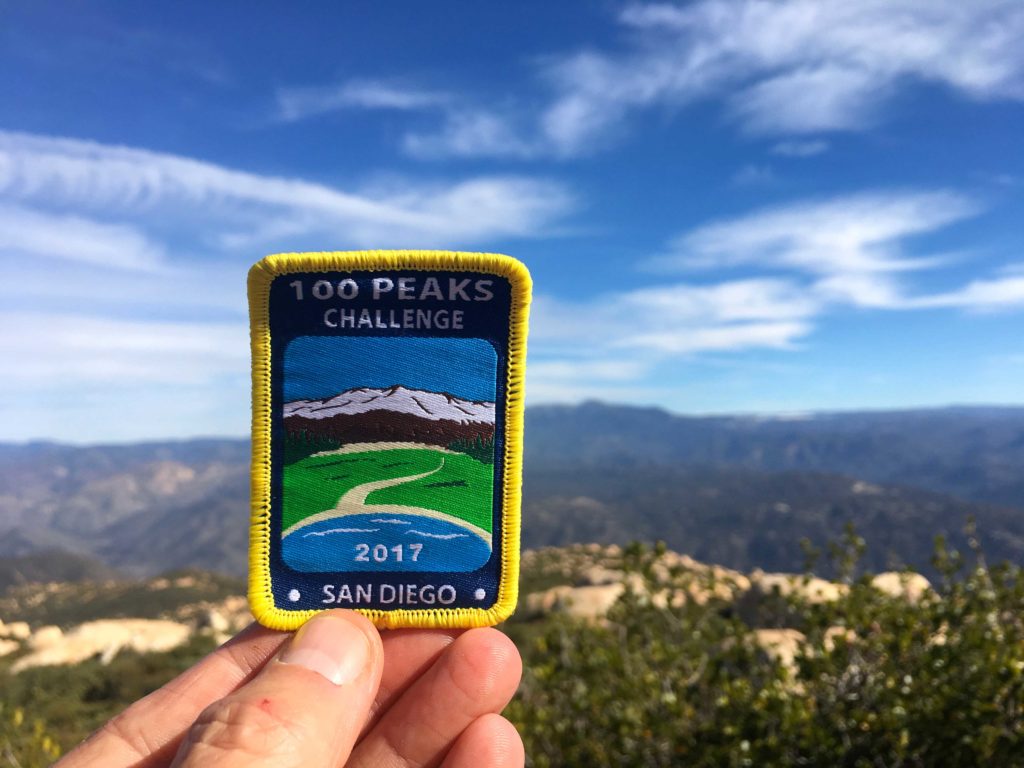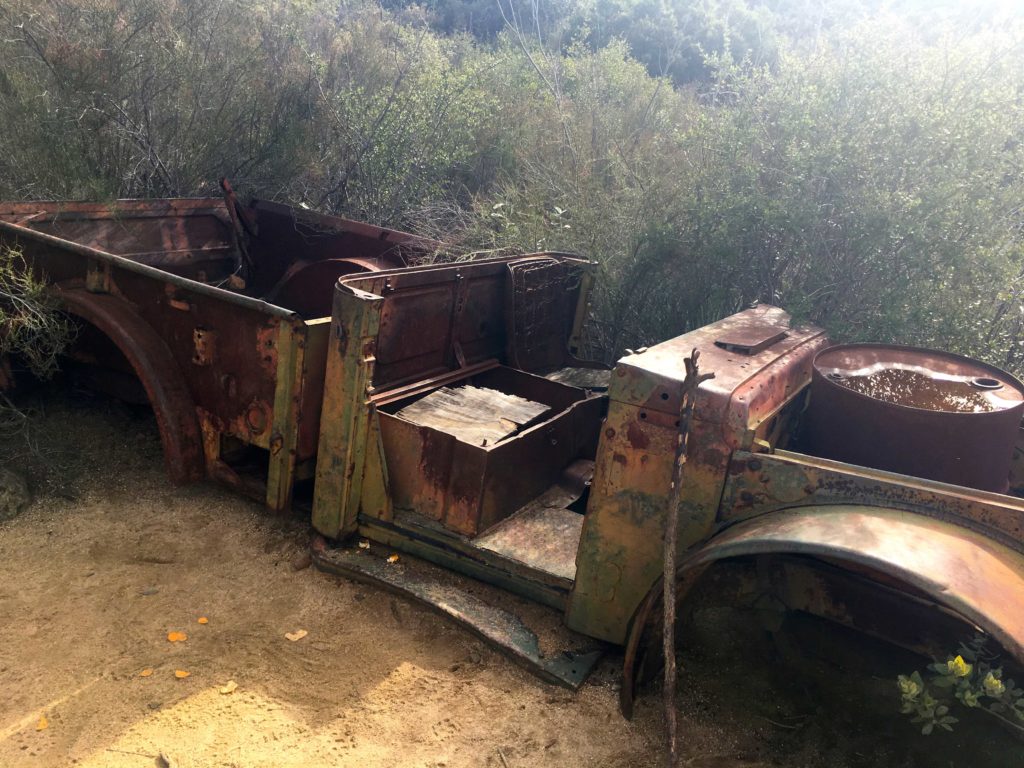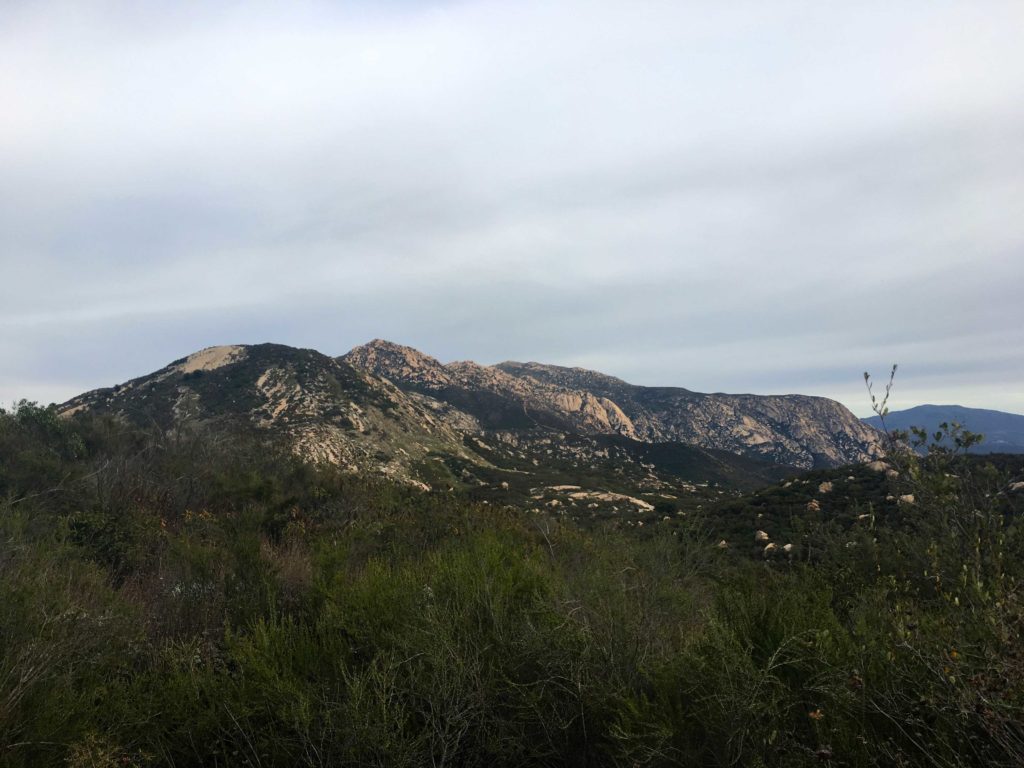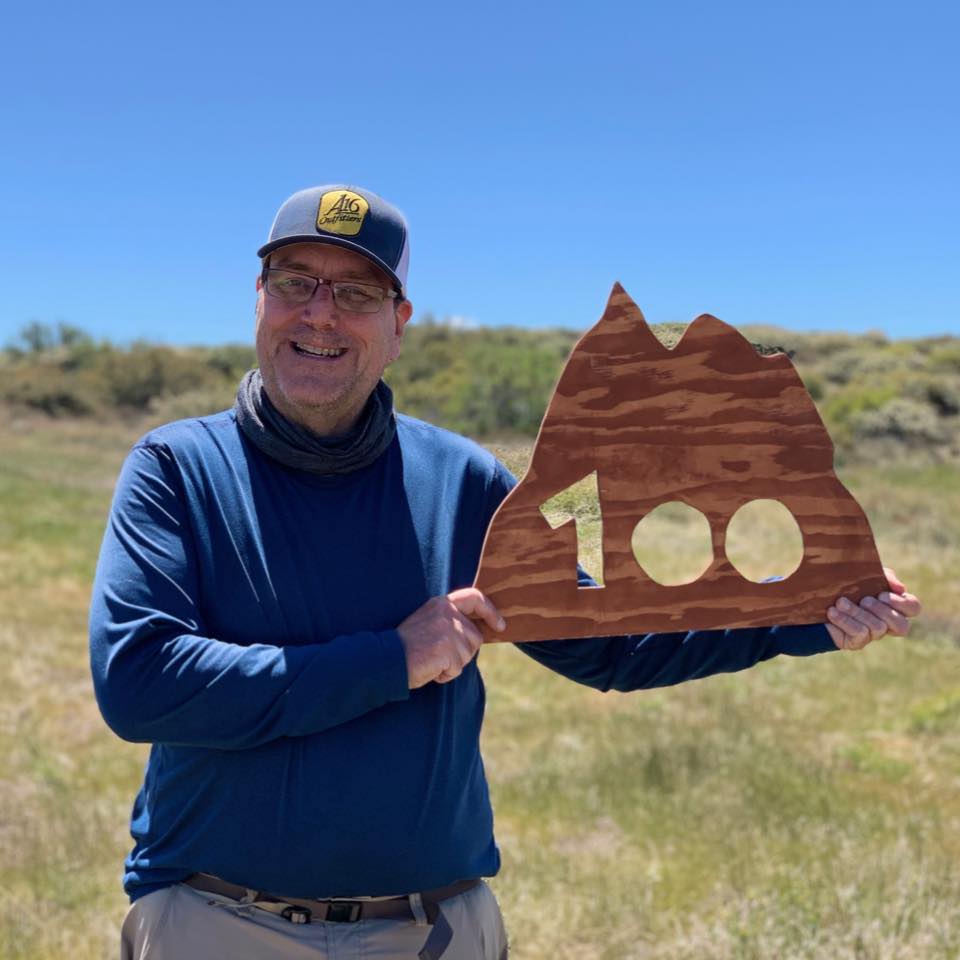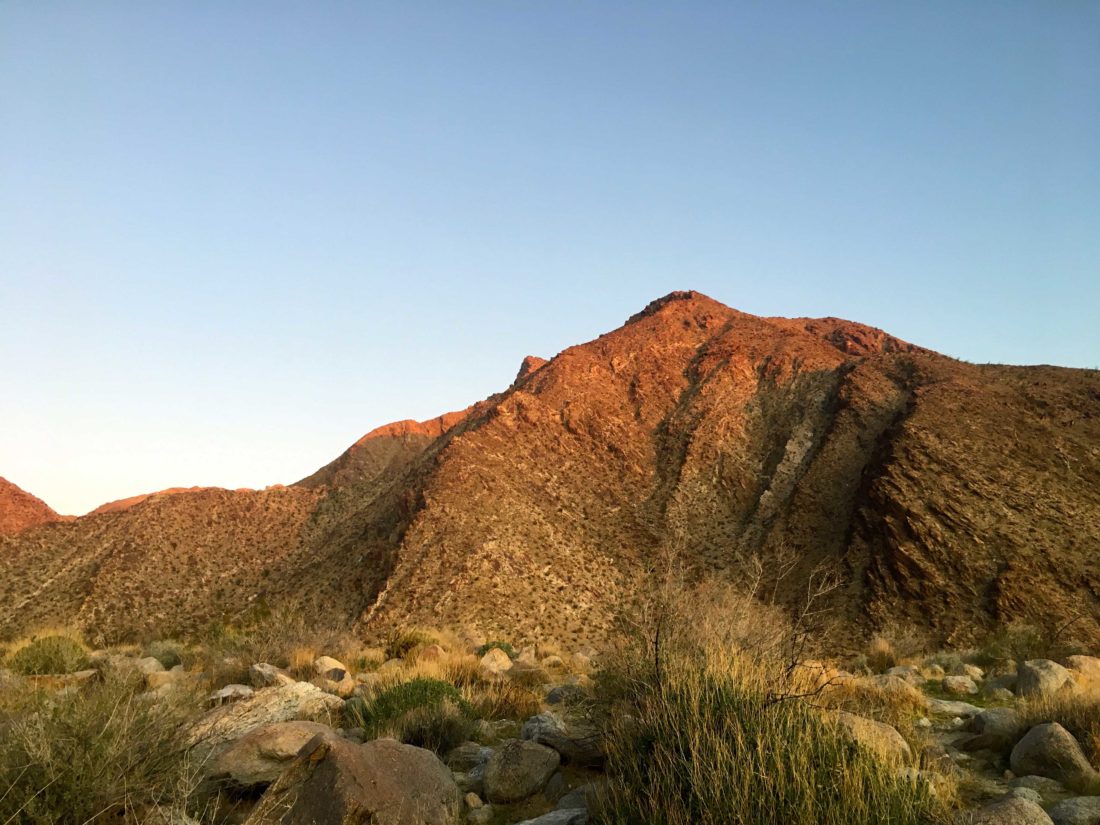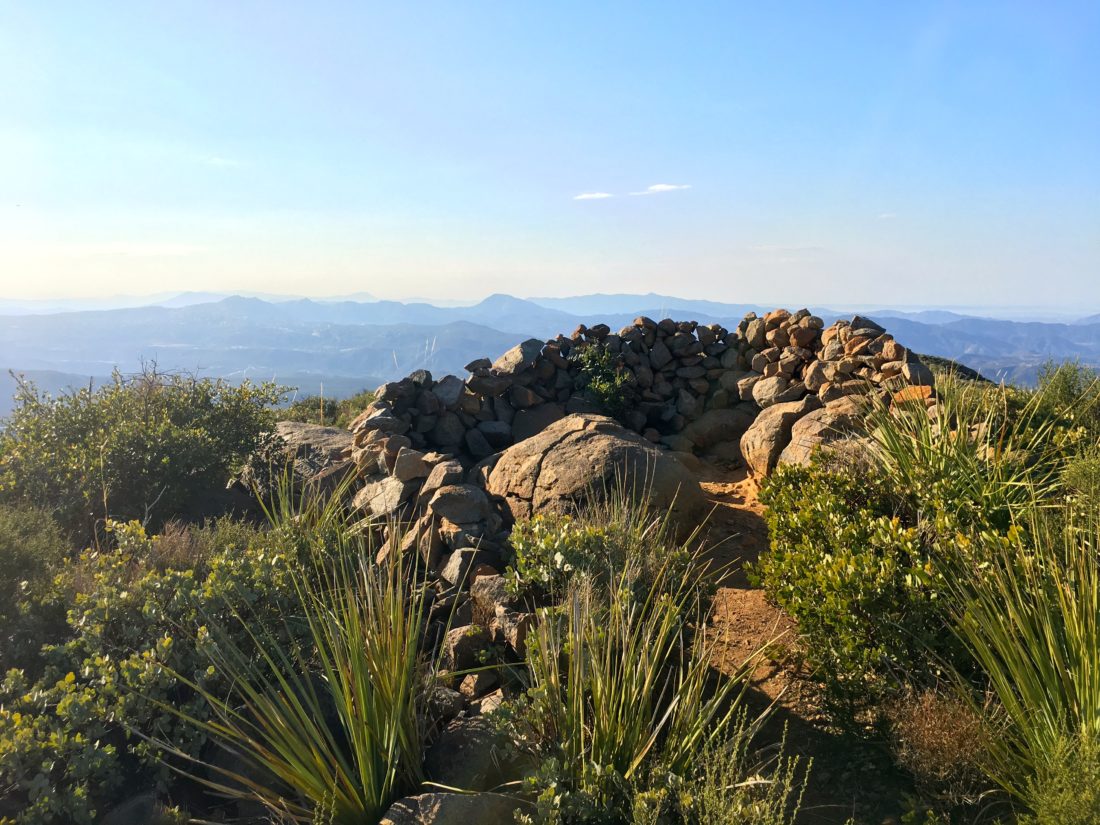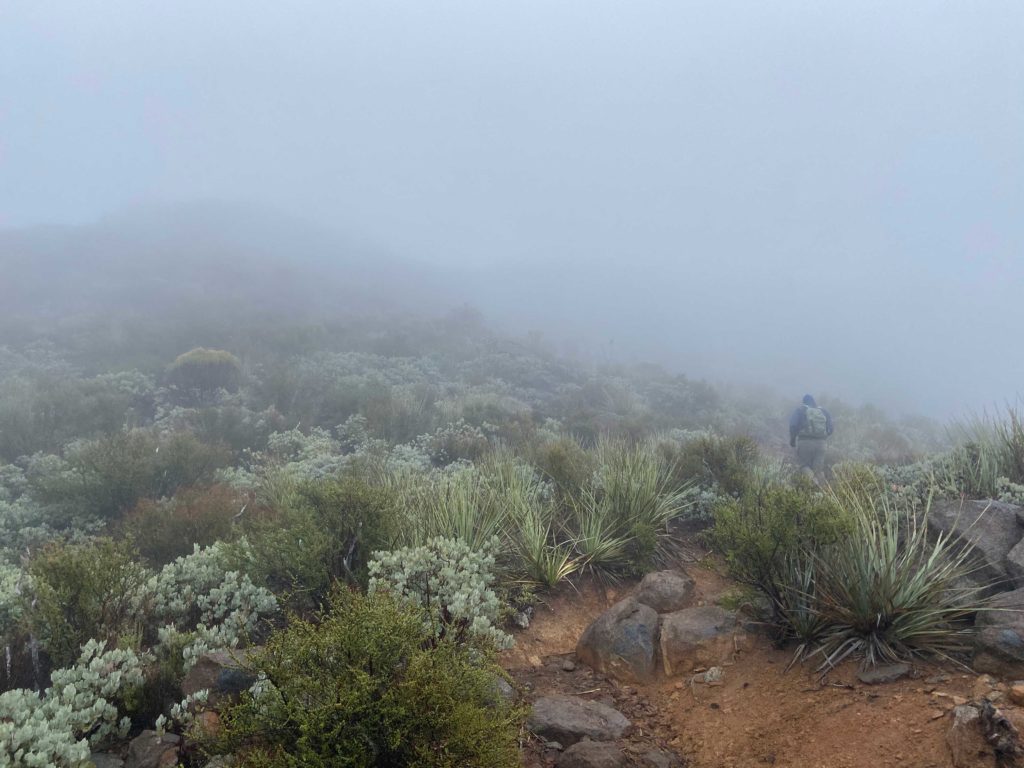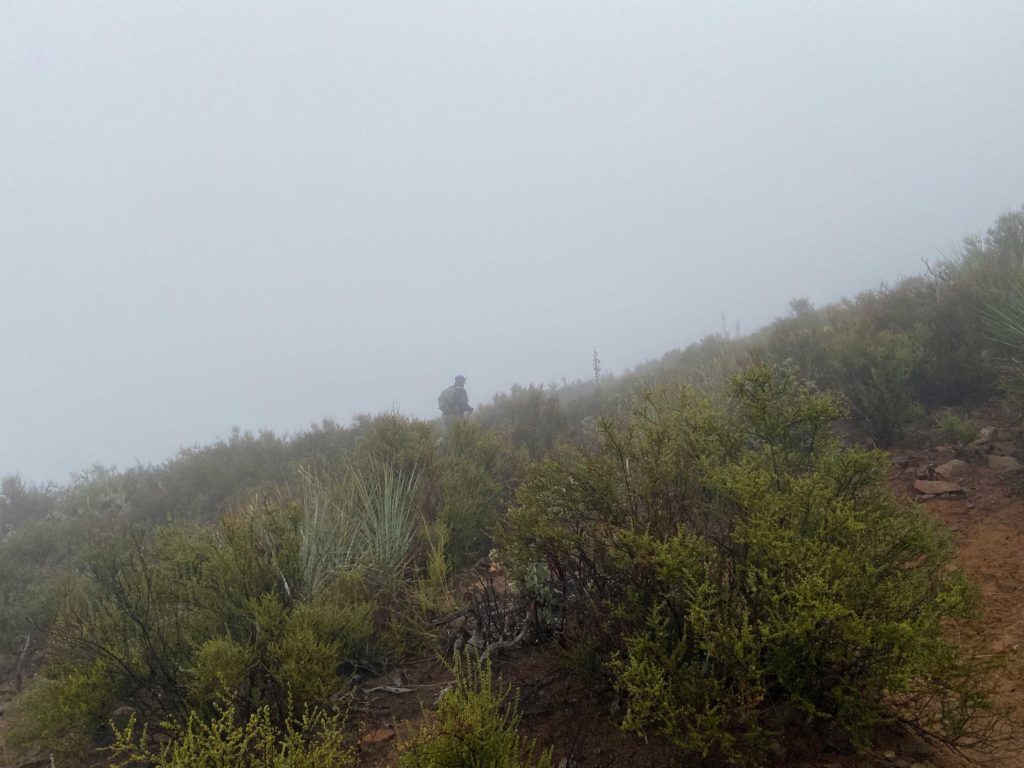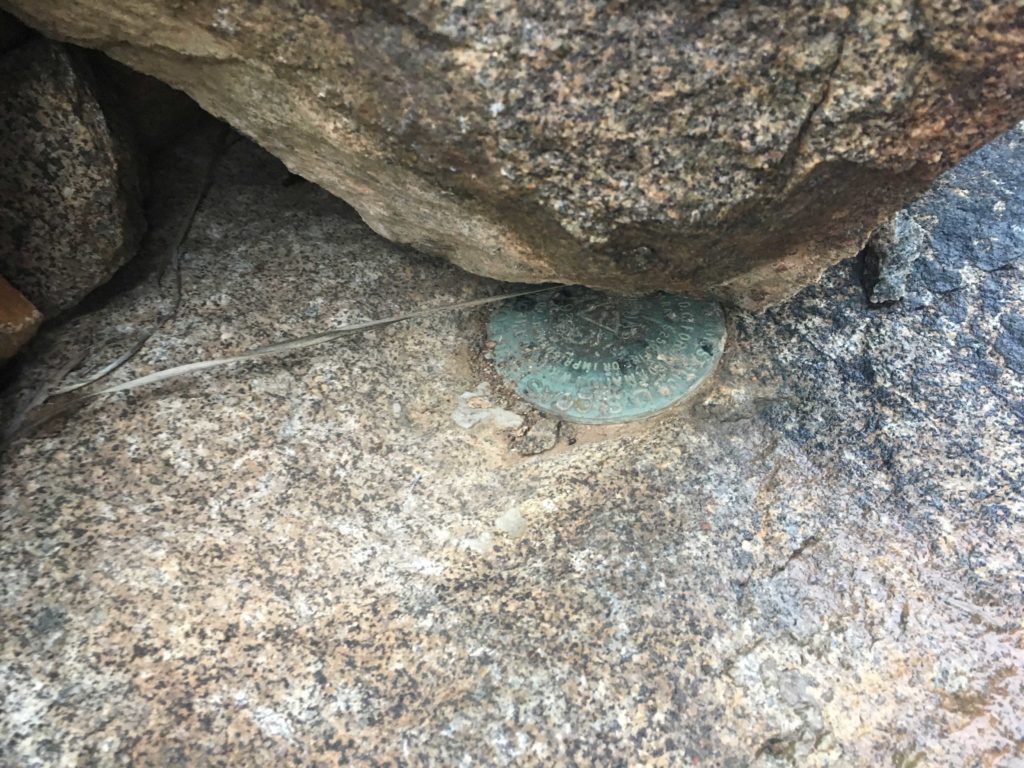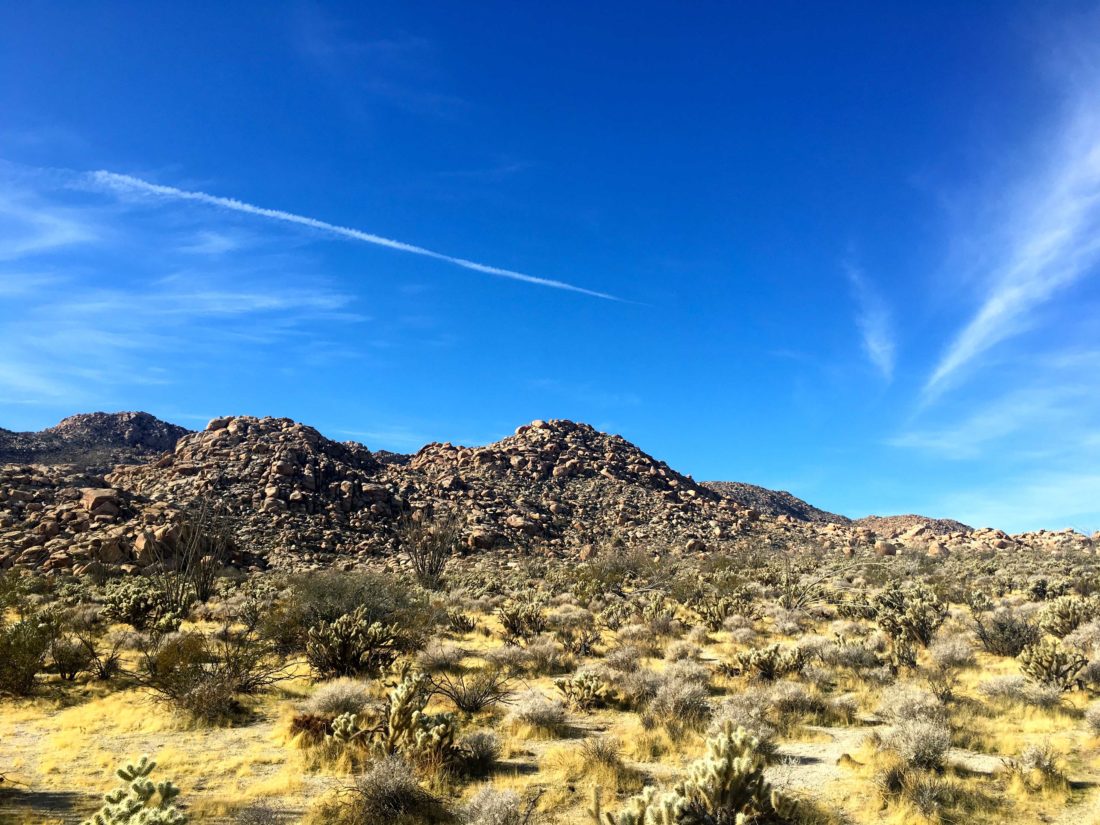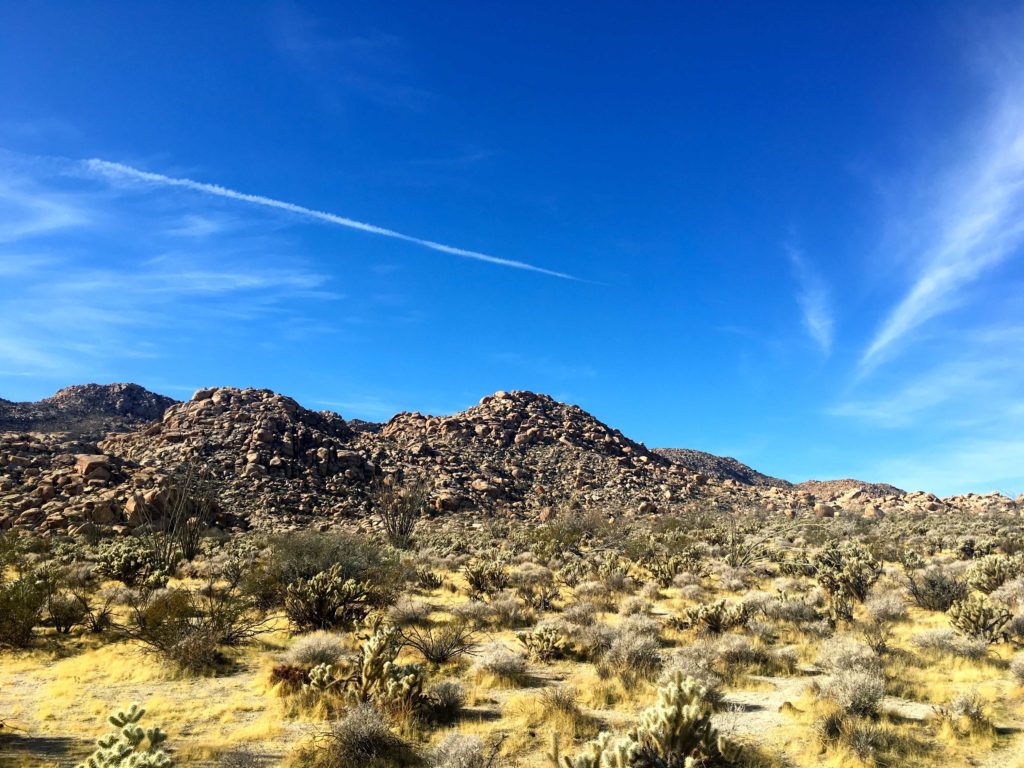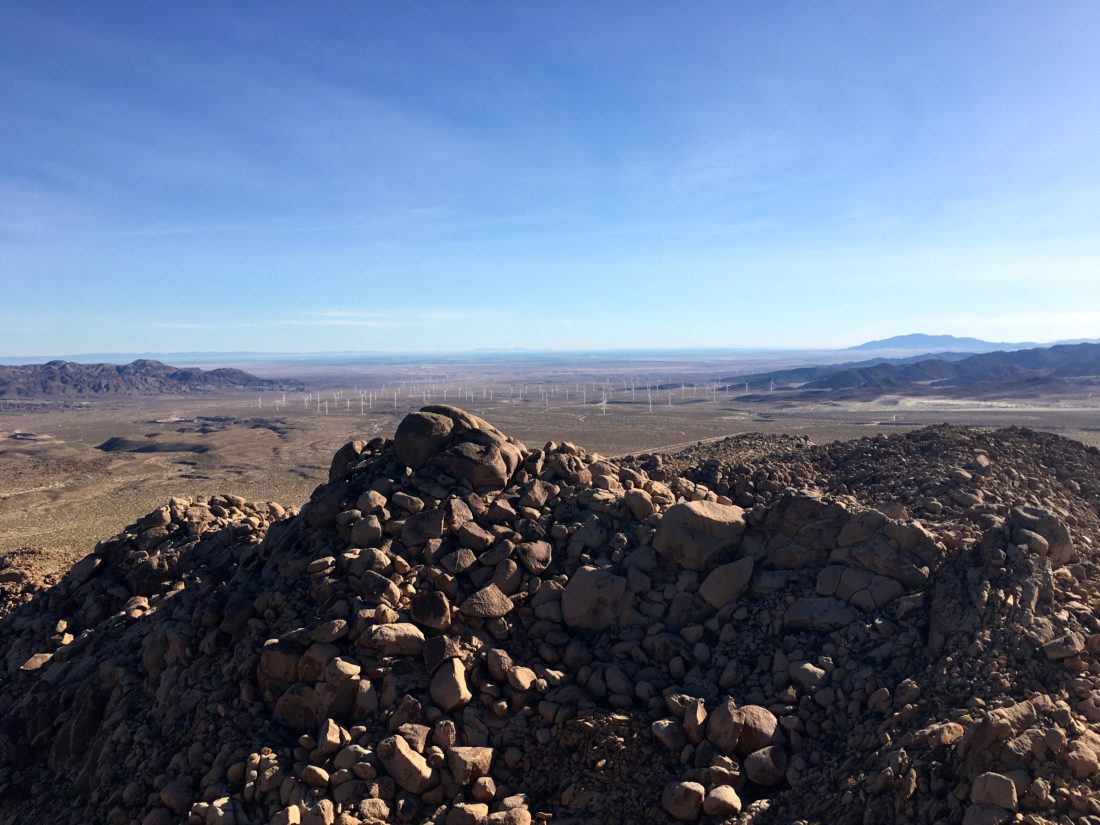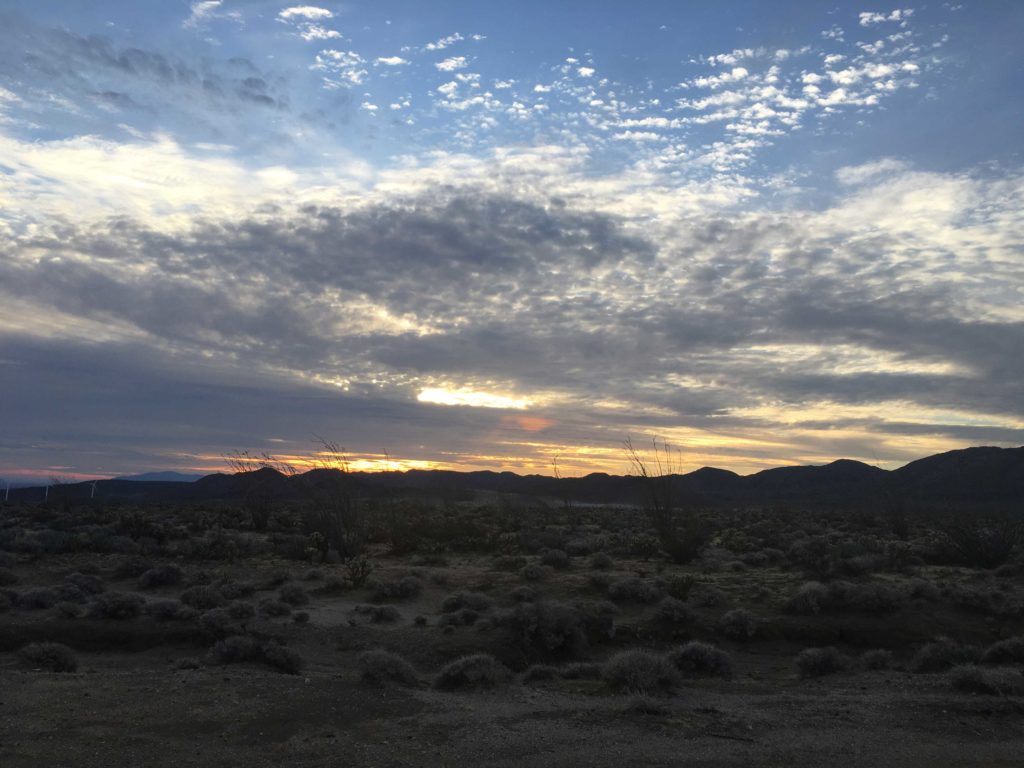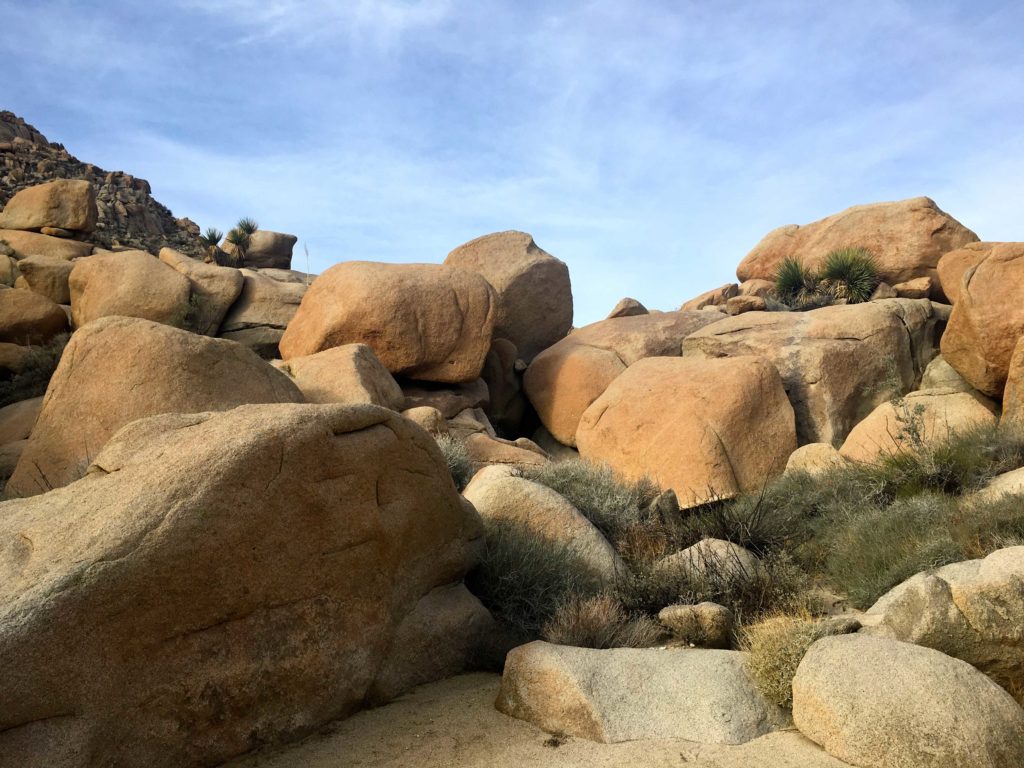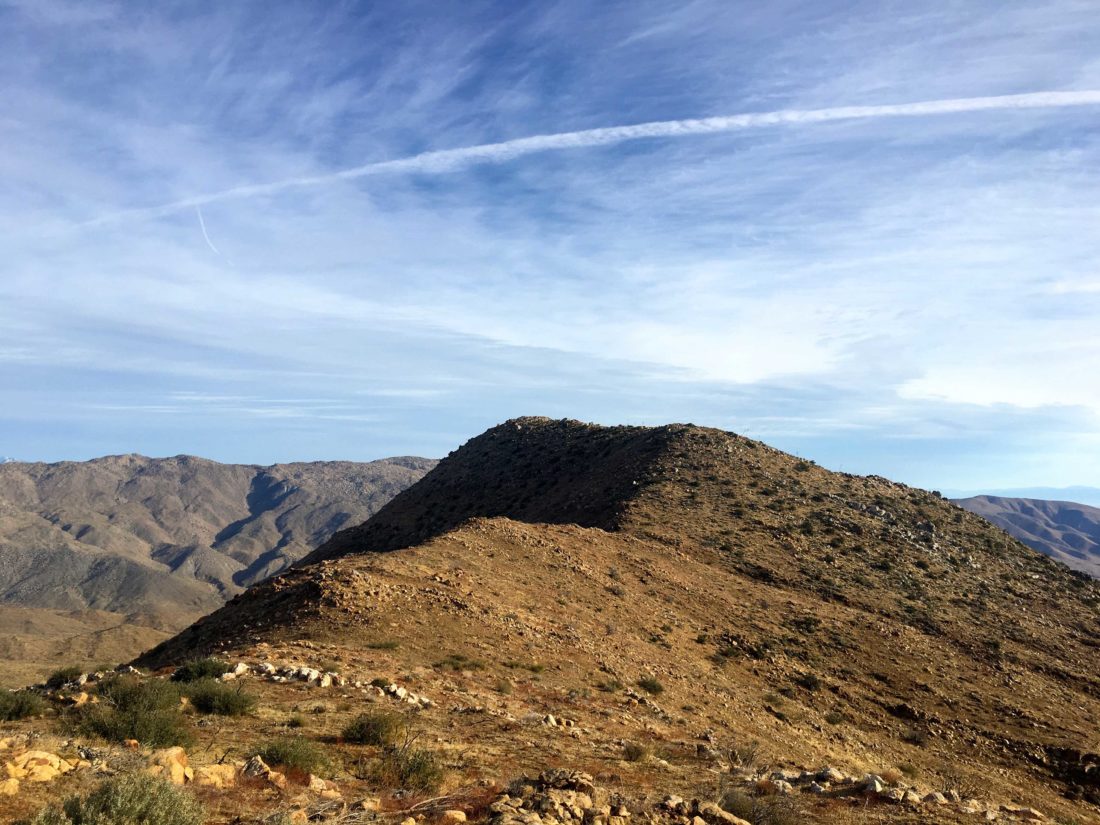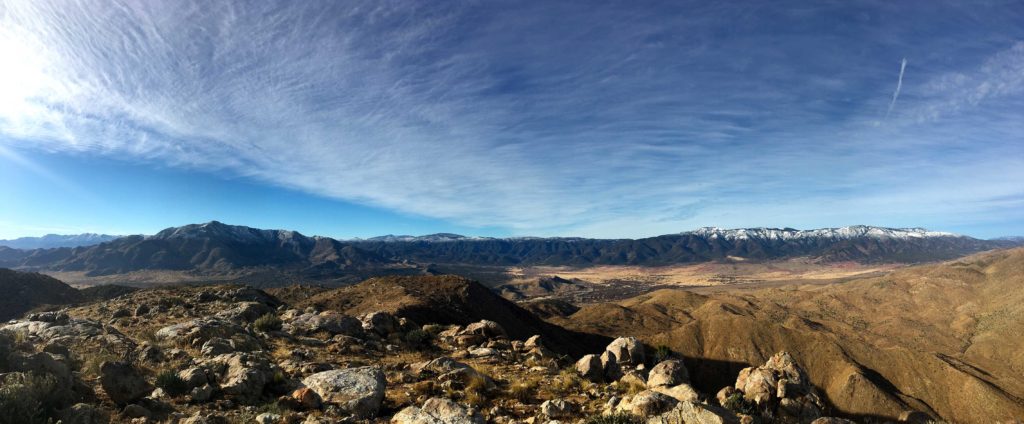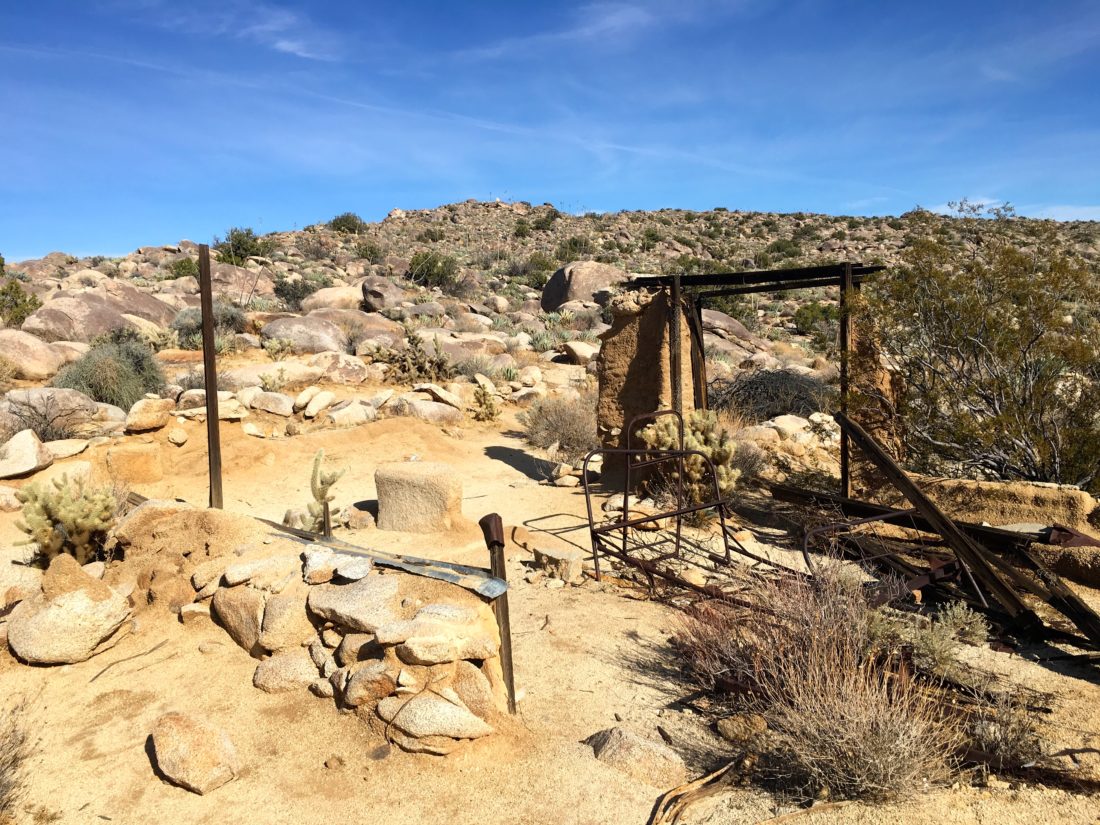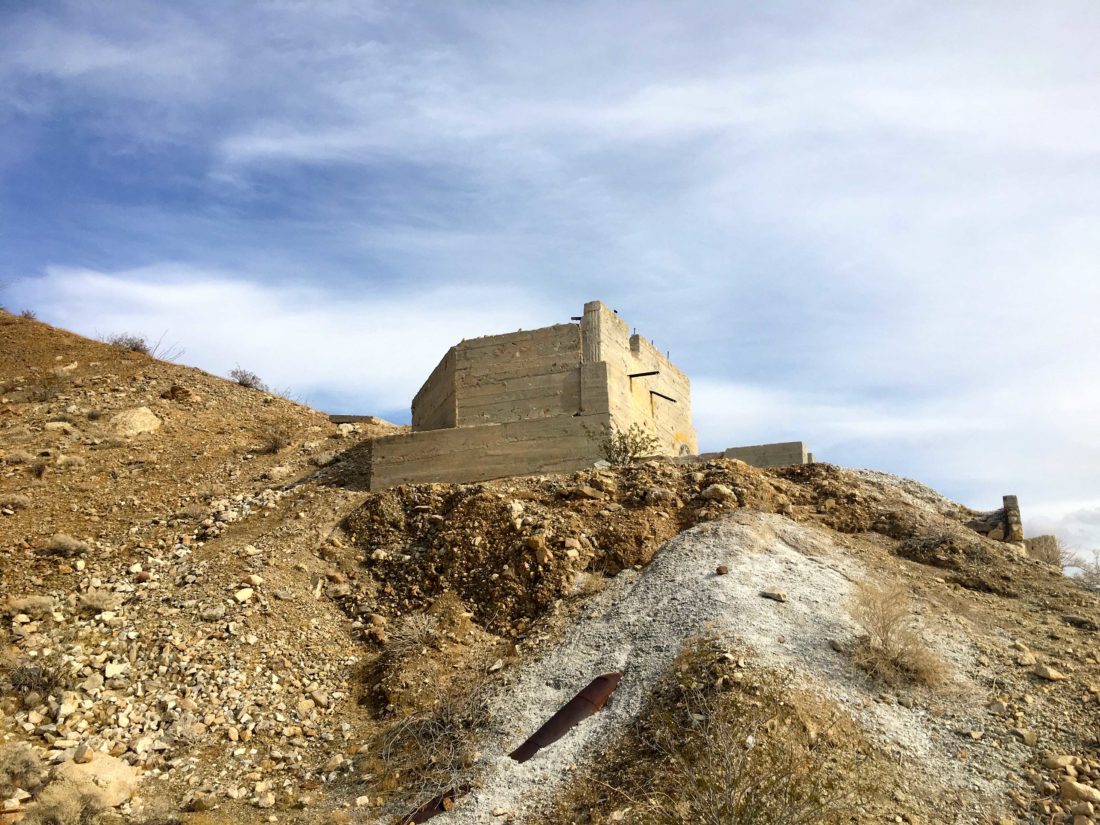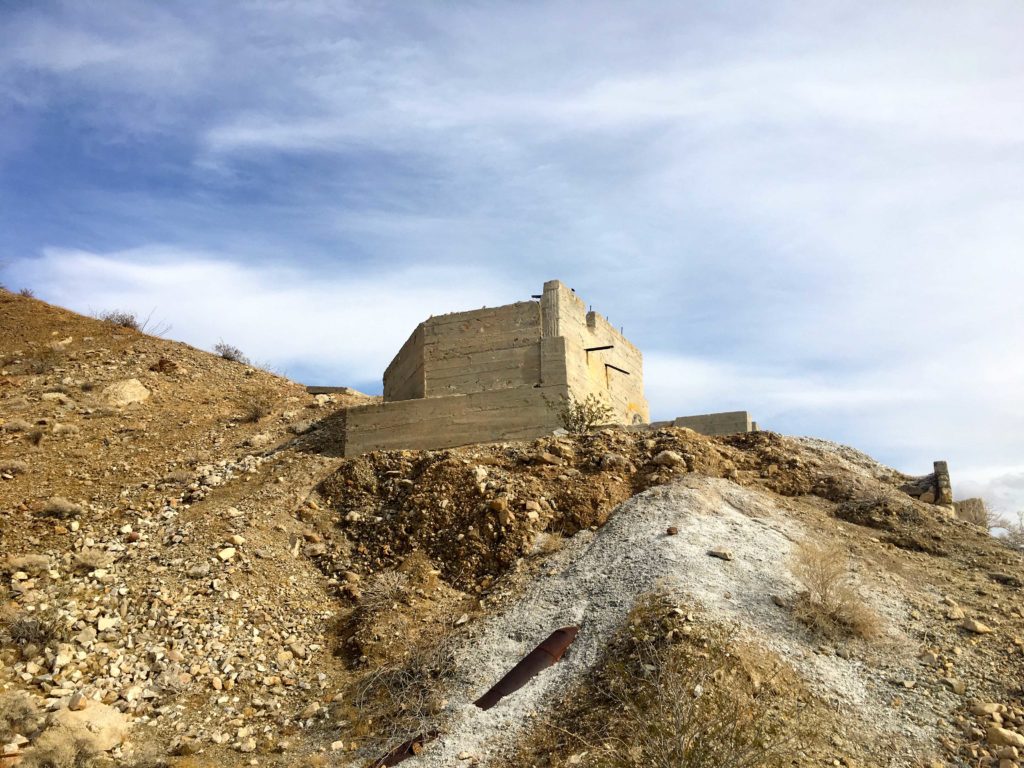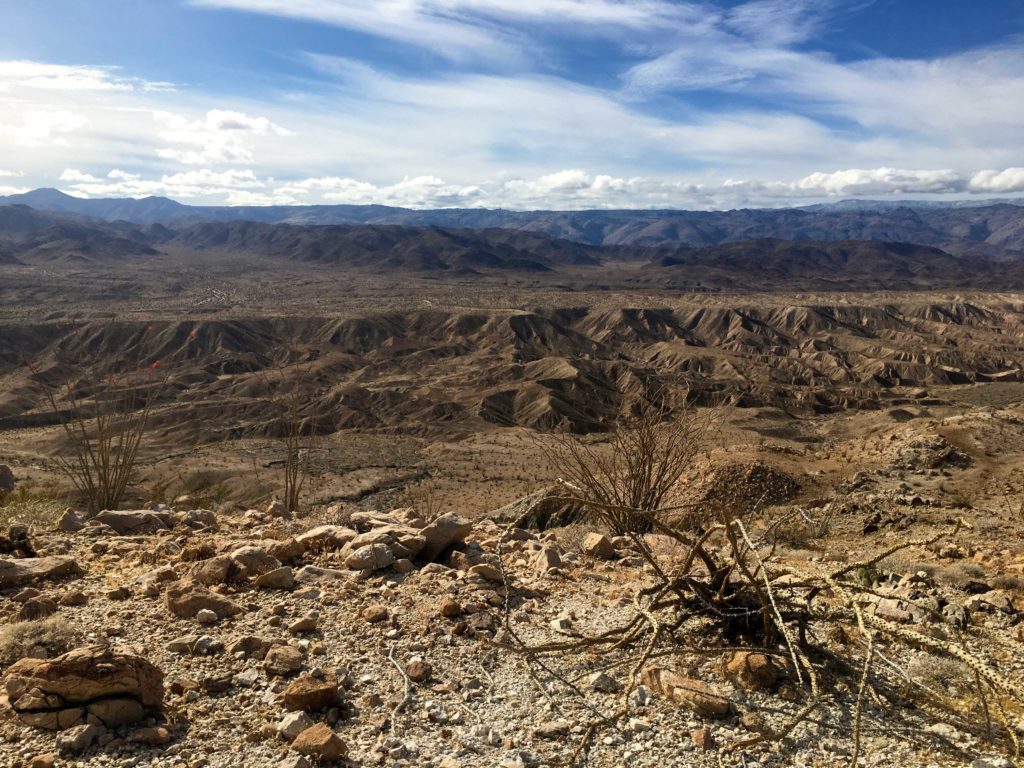Well, since I just finished the 100 Peak Challenge, I thought I would offer some guidance to those who might be looking to attempt it in some fashion. I was able to complete it with a combination of luck and planning. Now, I can’t help you with the luck part but I can go into detail about my planning. Two factors that will have the most impact on how you do this challenge are the weather, specifically for those hikes in Anza-Borrego, and the difficulty of the hike. Remember just because the mileage is low, it does not mean those are easy miles (either of the Sombreros come to mind).
When I knew my first attempt at completing this challenge was not going to happen (due to my final peaks all being in the desert and it becoming too warm to safely hike them), I took a look at the peaks I would need to revisit. I grouped the 100 peaks into three categories: desert, in-town and general. The desert hikes were pretty self-explanatory. In-town hikes were any hike that it took less than 1 hour to get to the trailhead. General hikes were all the rest. Since the desert window had closed until the fall for me, I focused on the general hikes on the weekends, and the in-towns were before or after work, or if a full hiking day wasn’t possible. During the first attempt, I did many of these on the weekends. Now that I knew the trail, the difficulty, and was in better shape, I tried not to ‘burn’ precious weekends on them.
Another thing I was able to do was summiting multiple peaks in one day. While some are natural doubles, Lawson and Gaskill for example, once you know where the trailheads are, along with what the trail is truly like, you can start to combine them. For example, Manza Benchmark and Sheephead Mountain are about 10 minutes apart by car. But with a nice breather in between, these are doable in a single outing. Another thing I did was to have backup peaks ready to go. Routes loaded on my phone, paper maps printed and extra food and water. Sometimes a peak might not be doable, and/or if you are lucky you might be able to squeeze in a second or a substitute.
If you are starting the challenge now, I would focus on peaks out in Anza-Borrego. For some, desert hiking is scary, and often these peaks have no trail and take more skill than hiking up Iron Mountain or any of the more popular peaks. Here is what I would recommend cutting your teeth on:
Borrego Mountain – West Butte: Great trail to the top, easy to drive to (you get some intro to dirt driving).
Ghost Mountain: A good trail to the homestead, then you get to test your navigation skills to the summit.
Mine Benchmark: Once you are ready for some trail-less desert adventures, this short hike is a good one.
Red Hill: The trailhead is right off S-2 and the route is pretty easy to follow.
Once you are more comfortable in the desert you can start in on some of the others, such as:
Sentenac Mountain: A bit of canyoning and dry waterfall before reaching the summit.
Piedras Grandes: A good intro into some of the terrain on other peaks.
Indian Hill: A good intro into working through larger boulders.
However, Anza-Borrego is also home to some of the tougher peaks on this challenge. Know that there are some that will certainly test you…
For the general peaks, the temperature is still a factor. There were several times I turned back from a summit due to the heat (during my first attempt). Knowing this will factor into your planning. There were many days with sunrises at the trailhead. I would recommend trying to get more of the inland and lower foothill peaks in the spring. One thing about many of the trails is the lack of shade, so you will feel the sun. Good examples of peaks that fit into this category are Mt. Gower, Monserate, and Gutaty. Another factor to be aware of is the hunting season. I had to be a bit more aware of my surroundings on some peaks near Julian during the hunting season.
If you are like me, you probably have done the ‘in-town’ hikes more than once. I tried to find ways to do them differently. Sunset hikes or full moon hikes are good examples of this. Plus, you can get some experience using a headlamp, it will be needed for some of the tougher ones. Also, look for alternate routes, remember it is only the summit that matters, not the trail.
Hope this helps some. Please feel to reach out and ask questions. All my routes are on peakbagger.com, so you can use them as a reference.
